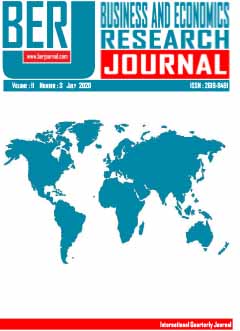Another Look at the Relationship between Portfolio Returns and Market Multiples
Another Look at the Relationship between Portfolio Returns and Market Multiples
Author(s): Marlena Akhbari, M. Fall Ainina, James E. LarsenSubject(s): Economy, Financial Markets
Published by: Adem Anbar
Keywords: Holding periods; Portfolio; Portfolio choice; Price-to earnings ratio; price-to-earnings-to-earnings growth ratio; Price-to-sales ratio; Price-to-sales-to-sales growth ratio;
Summary/Abstract: Equity investors are always interested in identifying profitable trading strategies. The price-to-earnings ratio (P/E) and price-to-sales ratio (P/S) are two simple metrics that researchers have reported may meet this objective under particular market conditions. During our study period, which is longer in duration than most of the previous works, the performance of portfolios based on P/S dominated those based on P/E. However, portfolios based upon the combination of low P/E and net profit momentum outperformed all other strategies tested. Another way the predictive power of P/E may be improved is by dividing it by a measure of the firm’s earnings growth, yielding a composite metric known as the price-to-earnings-to-earnings growth ratio (PEG). This metric has gained the attention of professional investors and researchers. Because many investors prefer P/S over P/E, it is surprising that a counterpart to PEG has not gained similar traction. Our results provide evidence that helps explain why the price-to-sales-to-sales growth ratio (PSG) has failed to gain attention. Our results also indicate that none of these market multiples alone can be employed to provide consistently profitable investment performance.
Journal: Business and Economics Research Journal
- Issue Year: 11/2020
- Issue No: 3
- Page Range: 671-680
- Page Count: 10
- Language: English

